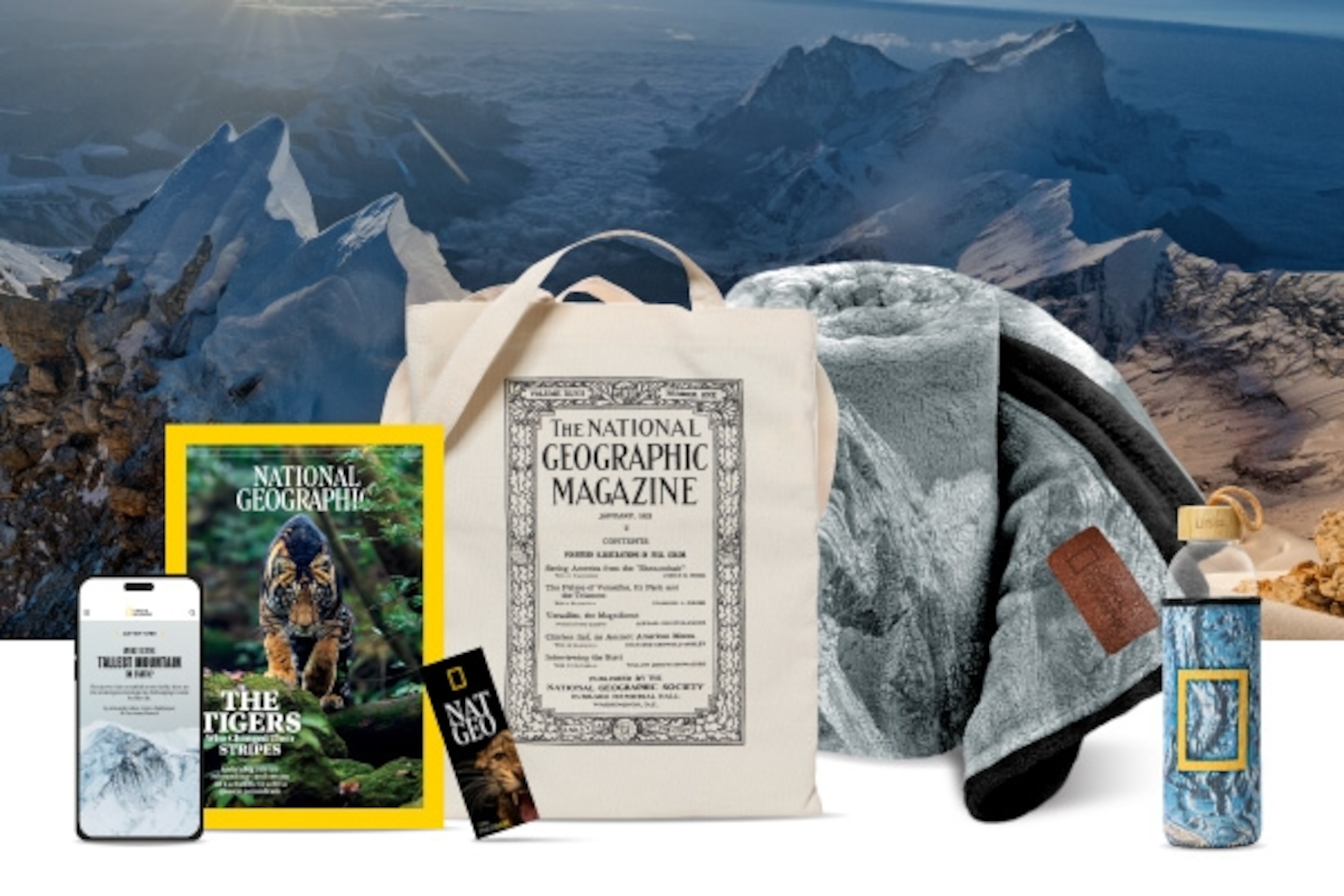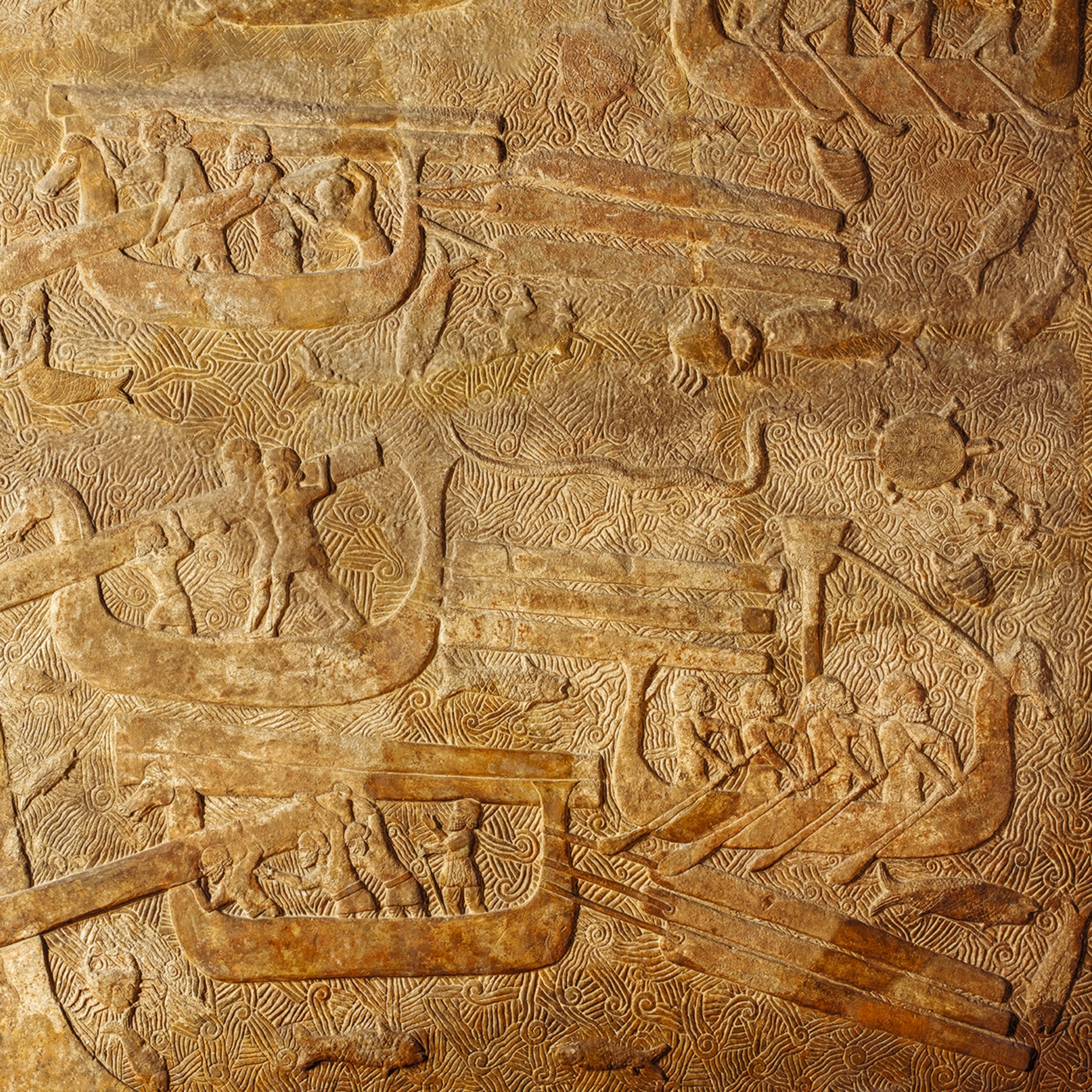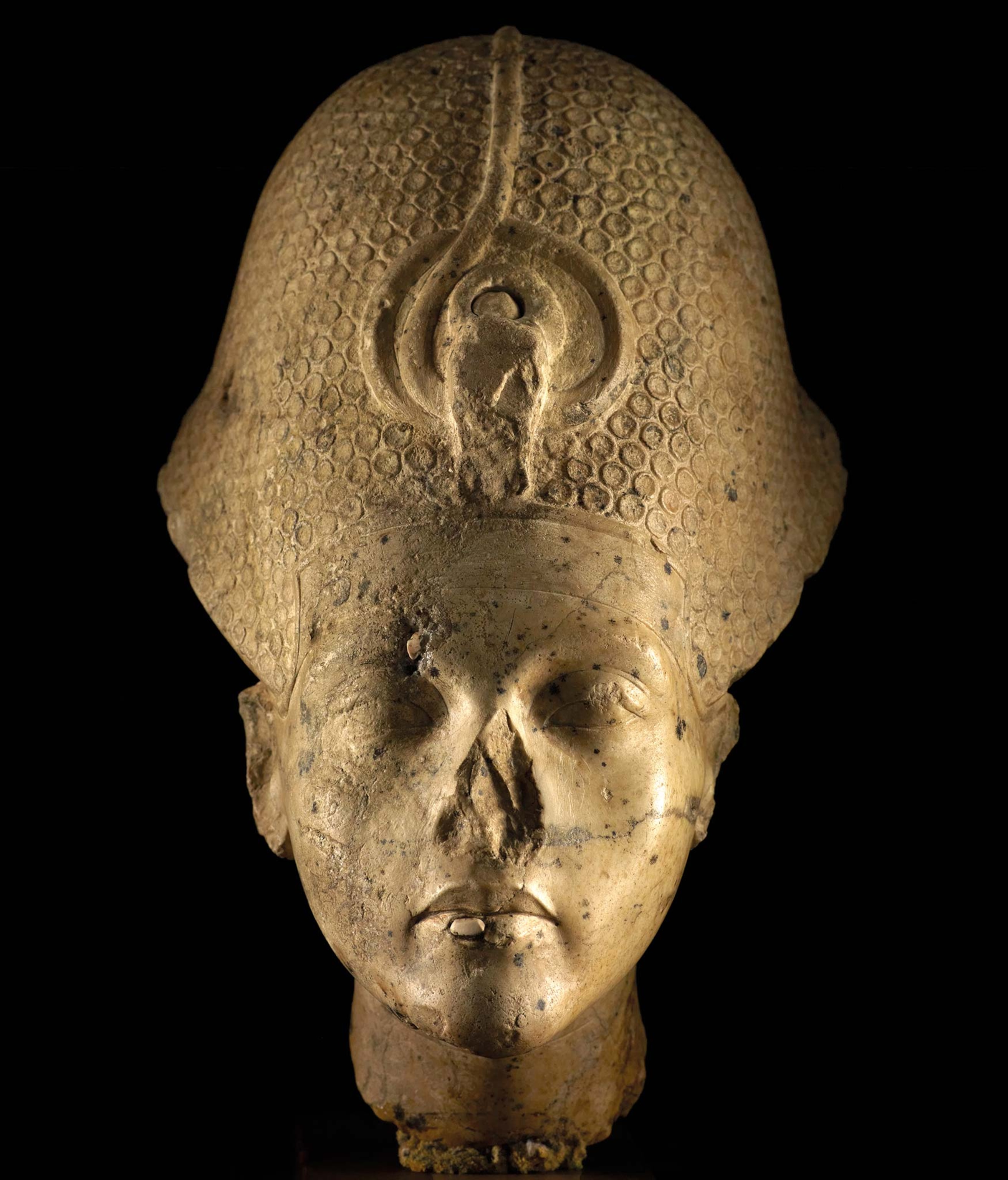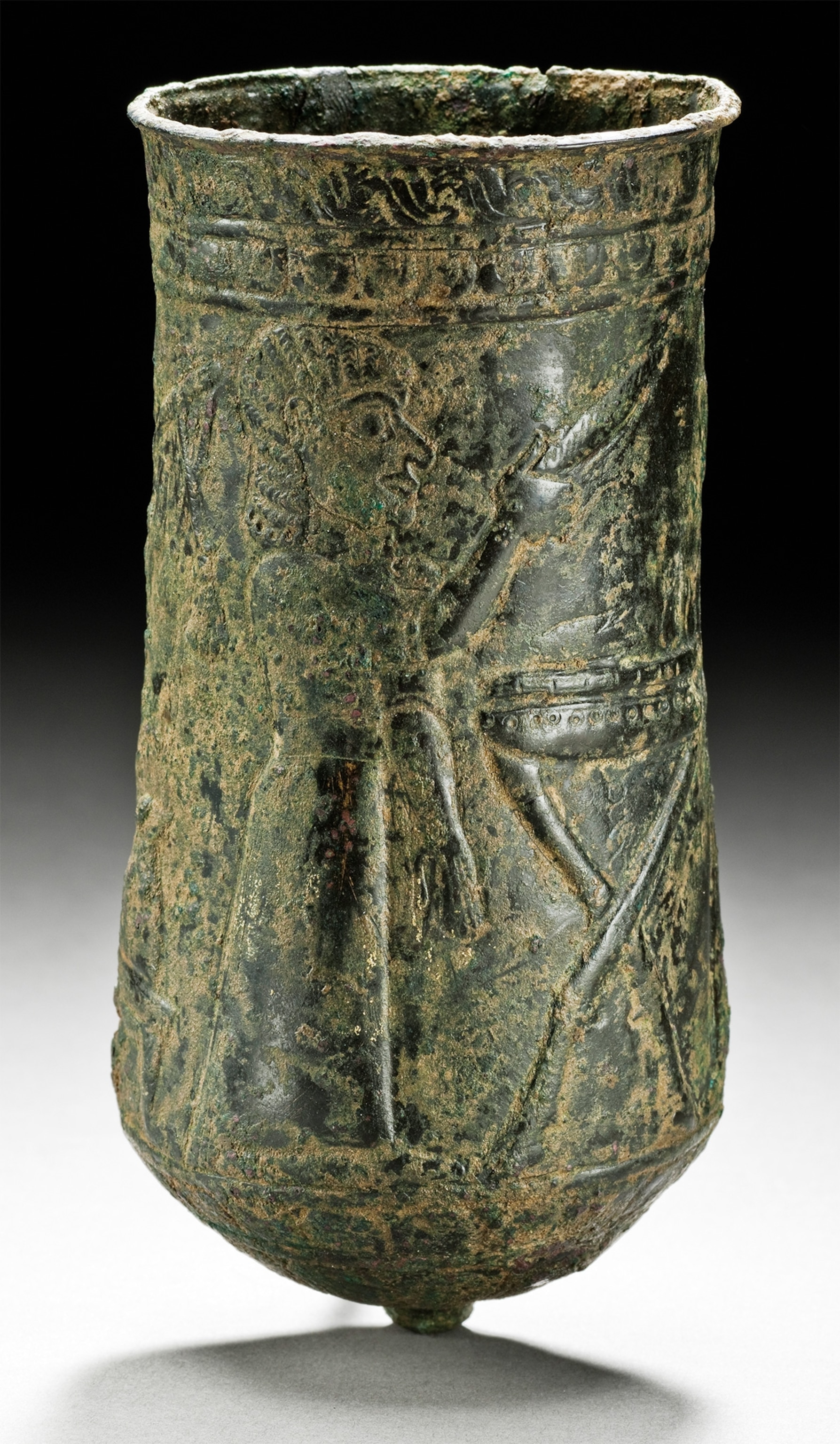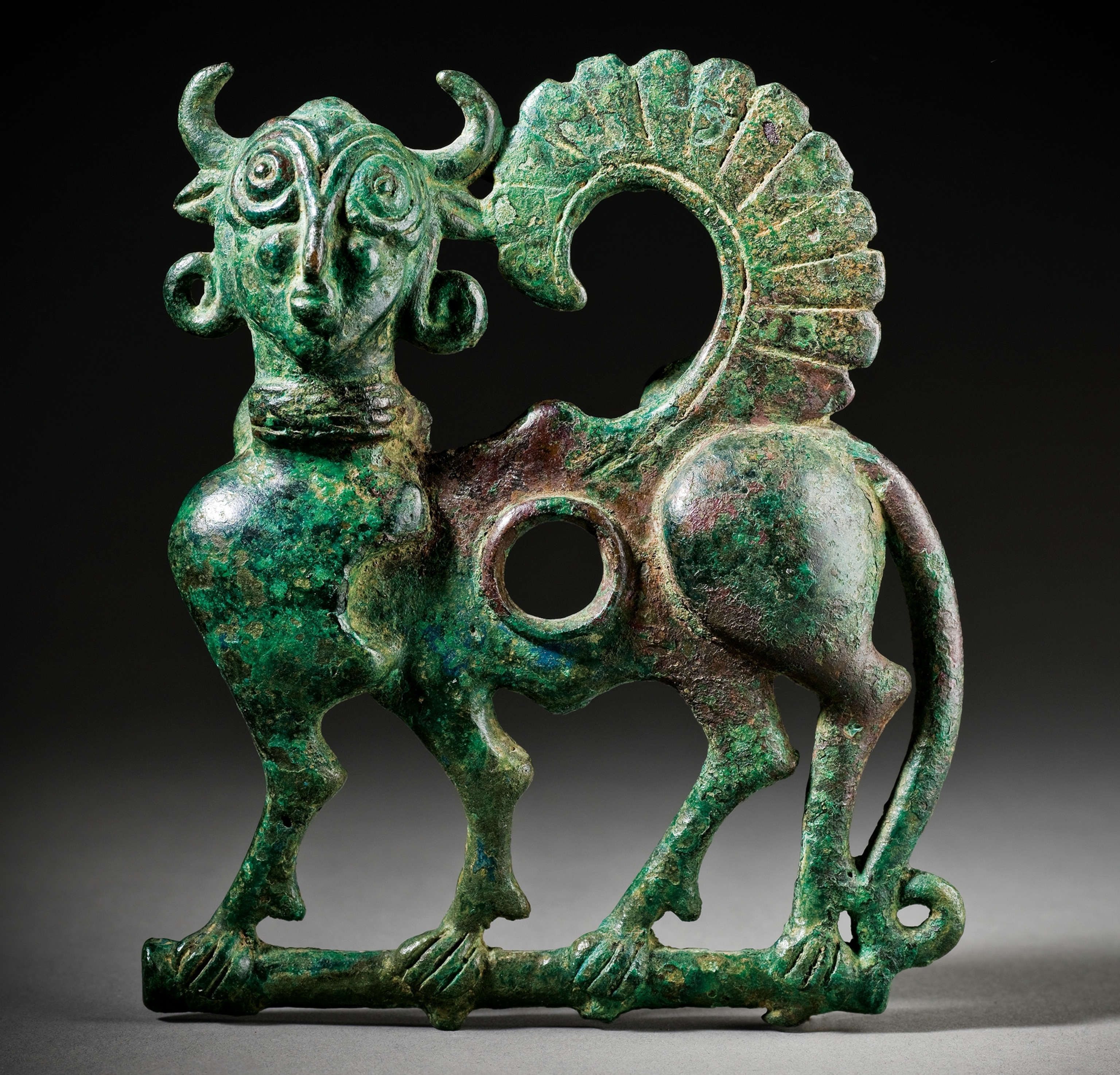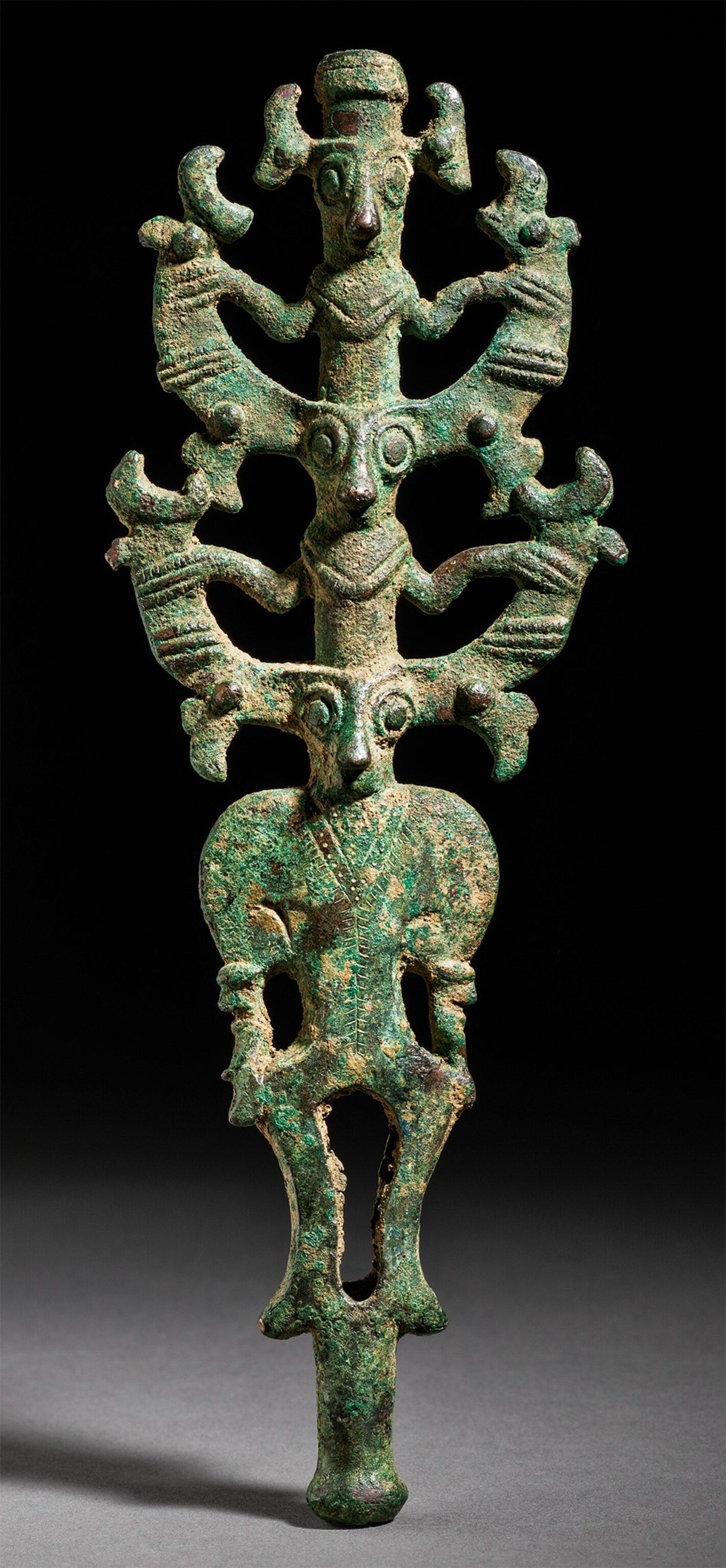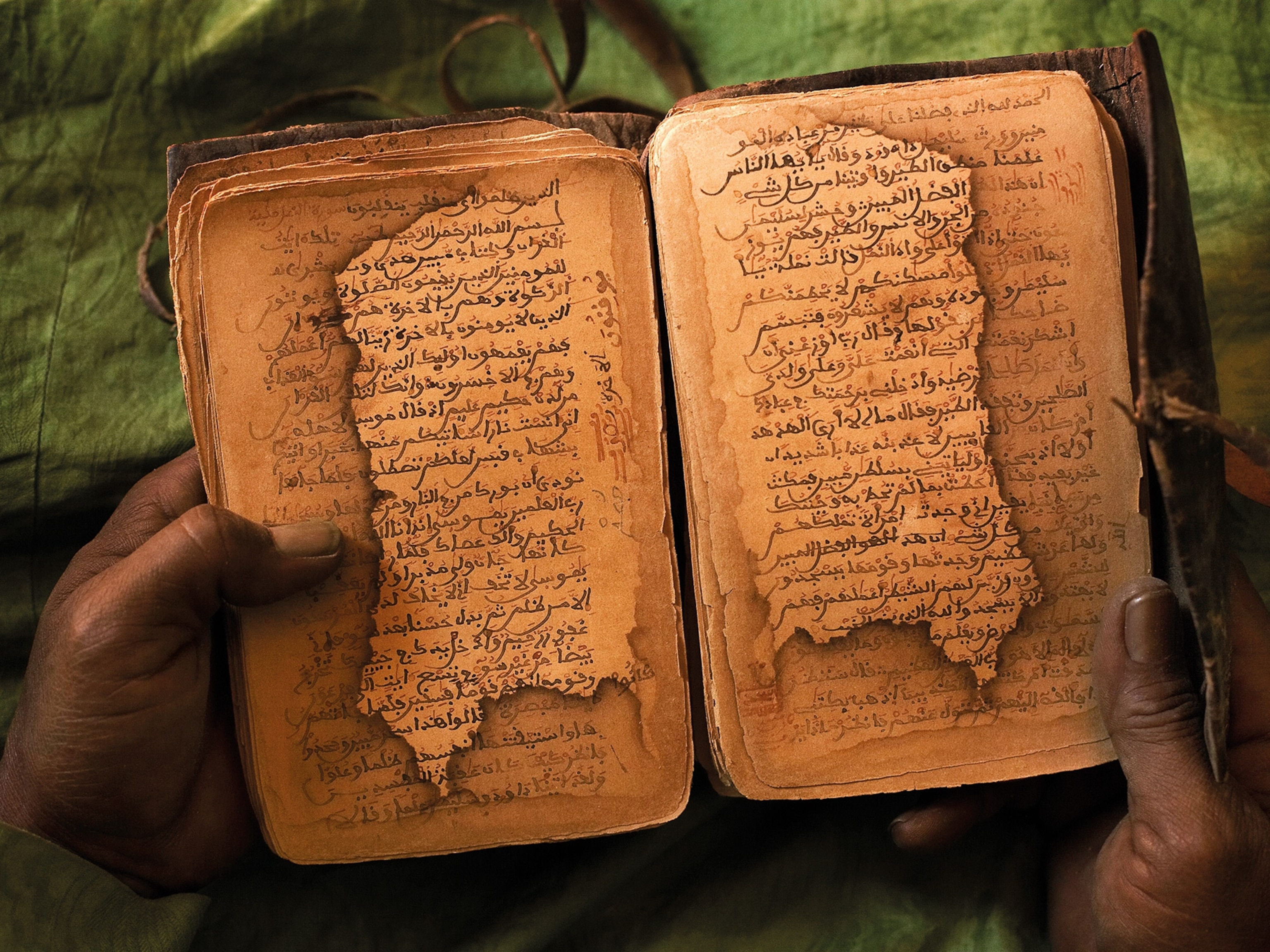The mystery of the Luristan Bronzes still puzzles archaeologists
Iron Age artifacts from the Zagros Mountains of Iran began to capture the world's attention in the 1930s, but scholars today are still debating who crafted them.

When exquisite bronze figures began flooding the antiquities market in the late 1920s, nobody knew much about them. Artworks of people and animals, embossed bronze cups, and delicate pins thrilled dealers, who were awed by their beauty. Inquiries were made about their origins, but answers were somewhat vague. Rather than name a specific settlement or civilization, dealers would only indicate a region in the Zagros Mountains: Luristan (located in western Iran and known today as Lorestan).
The deluge of Luristan bronzes began in fall 1928 in the sleepy town of Harsin, some 20 miles east of Kermanshah. A local farmer uncovered several beautiful bronze objects in his fields and sold them. Word of his finds spread, and soon the town filled with dealers who bought these works of art and then sold them on to museums and private collections. It was a profitable arrangement that suited many parties, and very little was done to stop it.
Great interest in excavating these bronzes arose among both academics and locals. André Godard, the director of the Iranian Archaeological Service in 1928, described the method used by the locals to detect a site to excavate. First they found a spring. Once that was located, there was a high probability of finding a settlement nearby with a cemetery. The formula was simple and effective: Look for a water source, and an ancient necropolis will not be far away.
(History's first superpower sprang from ancient Iran.)
Archaeologists in the air
The first Western archaeologist to investigate the bronzes was German-born archaeologist Erich Schmidt, who first began exploring Luristan in 1935. His work at the site was innovative thanks to his wife, Mary Helen. The two shared a passion for archaeology: They first met when visiting the site of Tepe Hissar in Iran.
Mary Helen advocated using airplanes to scope out the sites from above, and she bought one for the missions. Named the Friend of Iran, the plane surveyed Luristan and other Iranian sites, including Persepolis (ancient capital of the Persian Empire), that Schmidt would be studying. After permission was secured from Iran, reconnaissance flights flew in 1935-36 and again in 1937. Schmidt’s aerial photography would prove valuable not only for documenting the sites but also for methodically planning out the excavations.
Eyes in the sky
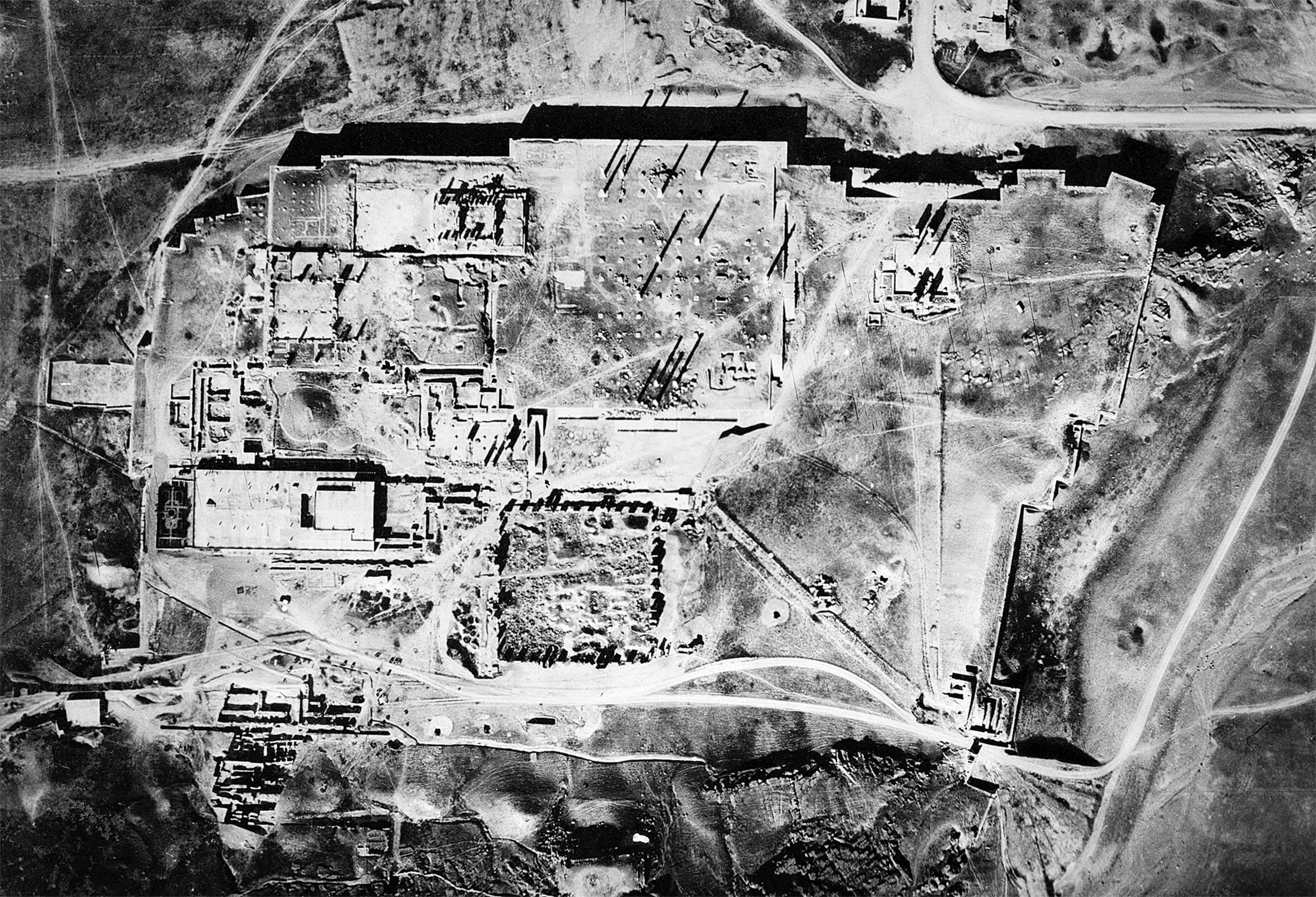
Schmidt's work made pioneering use of aerial photography in archaeology. Between 1935 and 1937, his team conducted the first aerial excavation surveys over western, southern, and northeastern Iran, including the site of Persepolis, pictured here.
In June 1938 Schmidt’s team explored Surkh Dum, a settlement site in Luristan. Prior to this dig, unauthorized excavations in the area resulted in the removal of many bronzes, resulting in the loss of valuable in formation about the site’s history. Local authorities finally put a stop to the looting, and Schmidt focused his efforts on uncovering what remained.
Despite the damage and looting, Schmidt’s team was able to recover bronze, ivory, and ceramic items, objects that revealed similar artistic techniques and styles to the bronzes that were being unearthed and sold in the 1920s. Much of the exploratory work at Surkh Dum centered around a multi-chambered structure that was believed to have been a temple or place of worship. Schmidt also recovered items from chambered tombs with stones placed vertically as walls and larger slabs as ceilings.
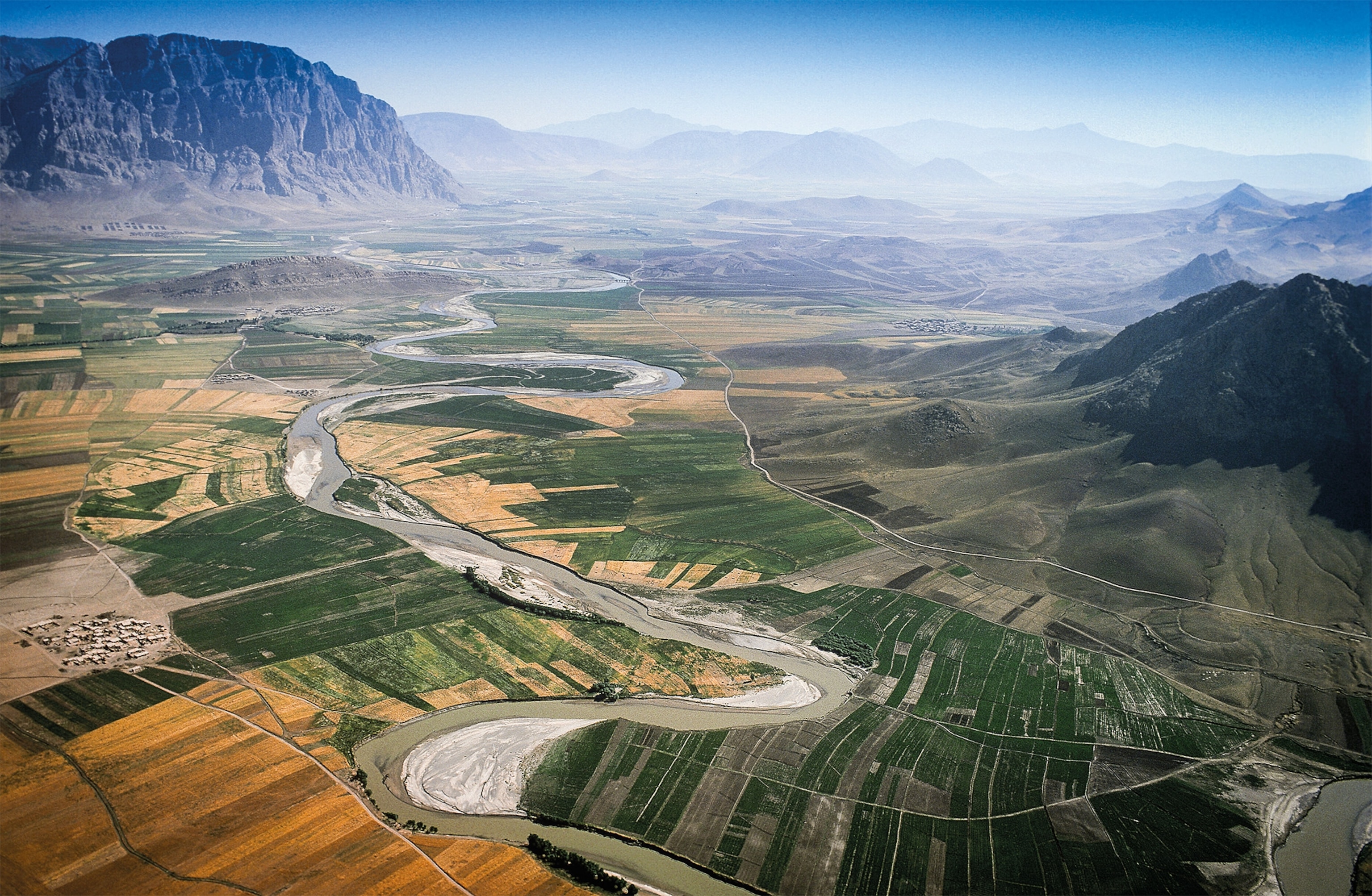
Establishing a strong chronology for the Luristan bronzes has been challenging. The extensive looting destroyed much of the surrounding soil layers, or stratigraphy, that archaeologists rely on to establish occupation dates.
Only in recent decades has it been possible to pinpoint dates for the Luristan bronzes. Stylistic and iconographic analysis was complemented by a series of archaeological digs during the 1960s and 1970s. The excavations, carried out between 1965 and 1979 in western Luristan by Ghent University and the Royal Museums of Brussels, made it possible to locate a large number of collective tombs full of finds. Thanks to intact stratigraphy, these can be dated. Based on these studies, scholars can more accurately calculate when the Luristan bronzes were made, a timescale that is fixed at some point between the 11th century B.C. and the mid-seventh century B.C.— the so-called Late Iron Age of Luristan.
The identity of the people who fashioned these beautiful pieces remains uncertain. Candidates include the early Medes, an Indo-European group who lived in the area, while others advocate for the Cimmerians, a nomadic people who originated in southern Russia and may have moved into Luristan in the eighth century B.C.
Cuneiform inscriptions on swords found in the region suggest the Kassites, a people who settled in Luristan around the 16th century B.C. and then occupied central and southern Mesopotamia until some time in the early 12th century B.C., were responsible.
(Flooding in 2001 revealed a 4,000-year-old lost civilization in Iran.)
Rich images
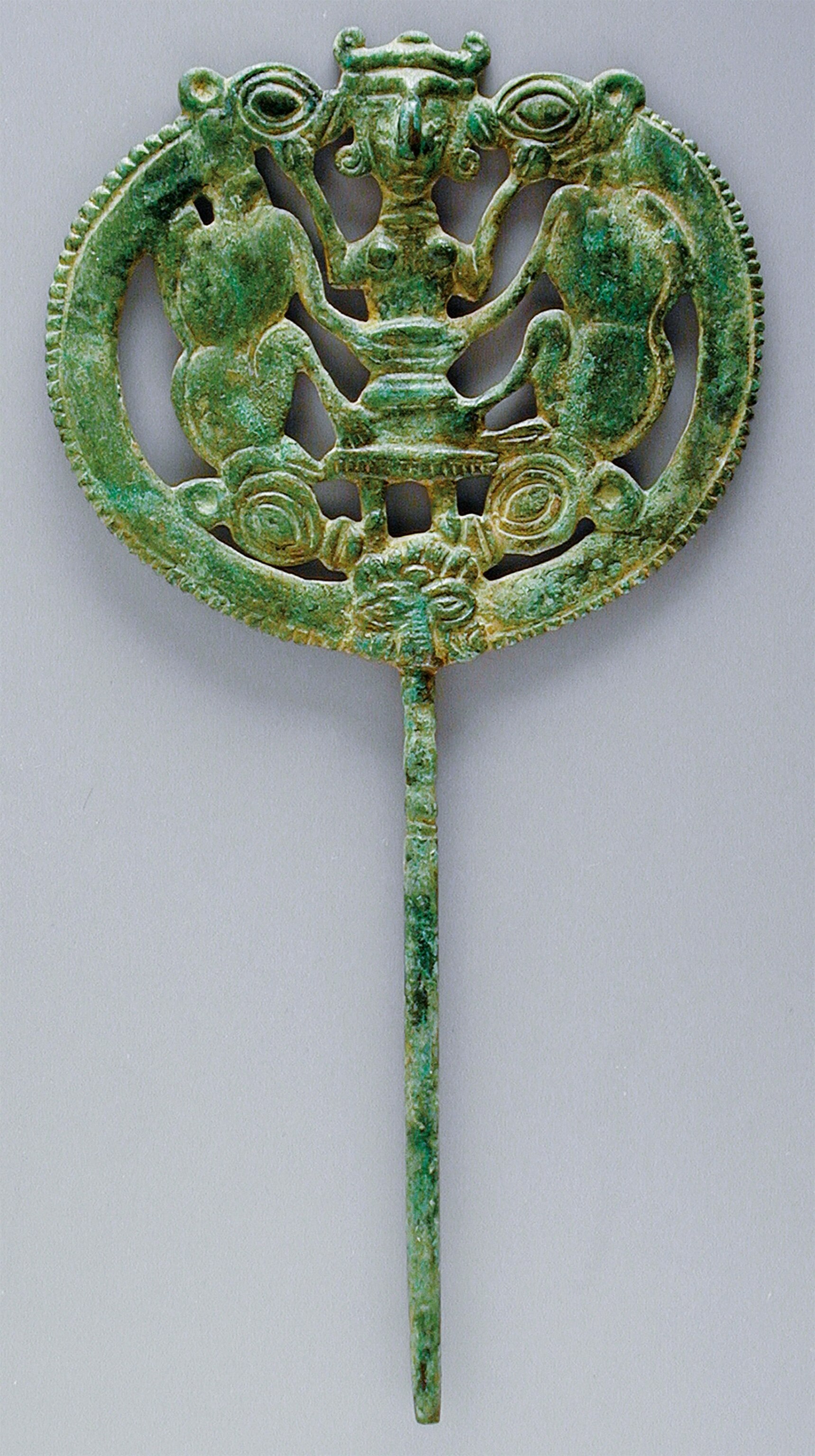
An incredible variety of artifacts was discovered in Luristan, most falling into three major categories: the standards (or finials), metalwork from horse harnesses, and pins. Different kinds of bronze pieces have also been found—including weapons like daggers, spears, and axes—but not in the same abundance.
The standards are objects that were once fixed to the top of a staff. What makes them unique is their complex iconography taken from the animal world, in which the ibex (a species of mountain goat) is common. One of the best-known and most fascinating variants is the so-called Master of Animals, which depicts a human figure (typically male, but female versions have been found) holding wild animals by the neck.
The kinds of animals vary, ranging from big cats or birds of prey to mythological beasts like griffins and sphinxes. The motif is common to other ancient civilizations: Master of Animals artworks have been found in Mesopotamian art as well as Sumerian. The motif is believed to symbolize human dominion over nature.
Magnificent horse-bit cheekpieces confirm the nomadic lifestyle of the people who fashioned them. As the archaeologist Paolo Matthiae has written: “The most frequently found item is the bit, decorated with two cheekpieces made of perforated plates with pictures of animals that had a large hole in their bellies, pierced by the bar of the bit.” The iconographic repertoire can include bulls, lions, and ibexes; in others, griffins and sphinxes.
Beautiful bronzes
There are also everyday objects. The best known are the pins, whose purpose is still debated. Some scholars think they were votive offerings, while others suggest a more practical purpose and they were used to fasten clothing. The pins feature a variety of subjects: goddesses, animals, and also the Master of Animals motif.
A final category are beakers, cylindrical vessels with a small nub on the base. The decoration, made in relief on the outside, includes scenes such as ritual banquets, with important figures flanked by servants or musicians.
(Explore other metal artifacts revealing ancient history.)
